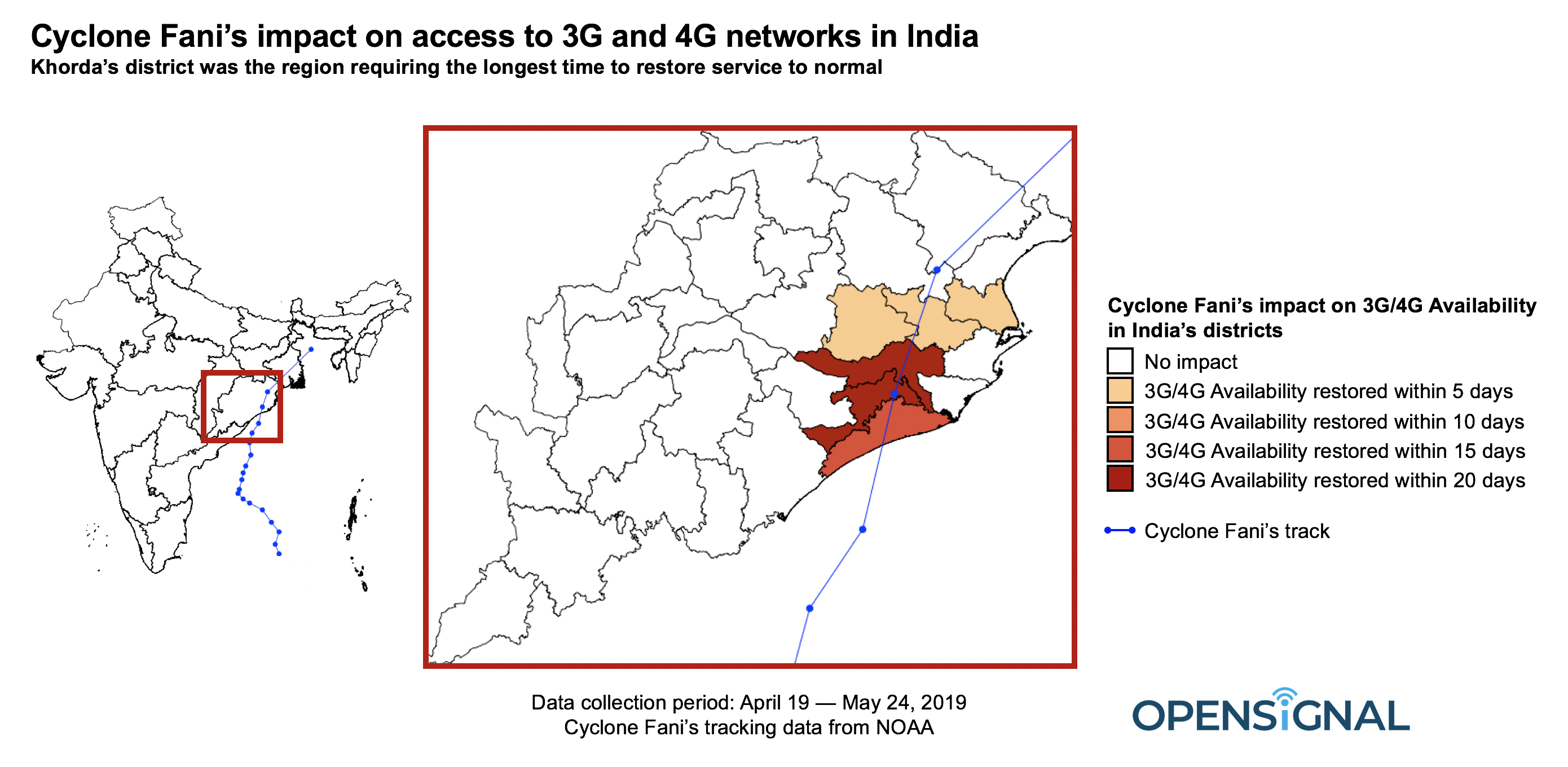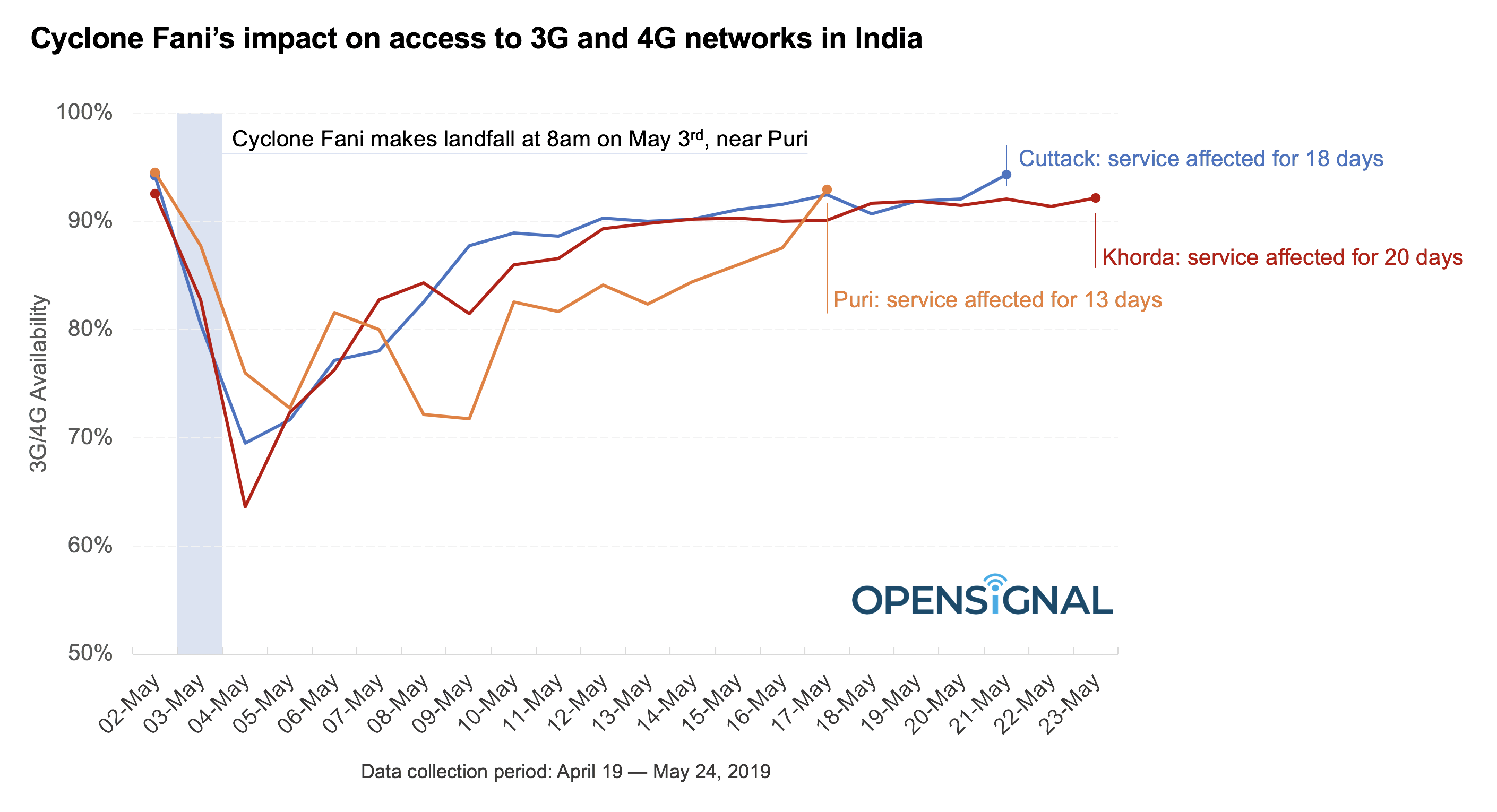On Friday 3 May, Eastern India was battered by Cyclone Fani, one of the strongest storms to hit the country in the last 20 years. The cyclone made landfall near Puri, a popular destination for pilgrims and tourists, with gusts of wind reaching 190 km/h, before heading north-north-eastwards and finally dying down.
Opensignal analyzed smartphone users’ experience before the storm and in its aftermath. We measured the proportion of time our users could connect to either the 3G or 4G networks of any mobile operator — 3G/4G Availability — for all districts in the state of Odisha, which was the worst-affected region. Our data suggests that Cyclone Fani affected mobile networks in six districts, while our users in the rest of the state experienced unchanged levels of mobile network availability.

Cyclone Fani made landfall in the district of Puri, then moved inland through Khorda and Cuttack, before continuing towards West Bengal and Bangladesh. We measured the largest impact on mobile networks in these three districts where the cyclone unleashed powerful winds, while we saw a limited impact on the next three districts in the storms’ path — Dhenkanal, Jajpur and Bhadrak — likely because the cyclone weakened as it moved further inland.

Out of the six districts where we measured an impact on 3G/4G Availability, it was not the coastal district of Puri that suffered the biggest disruption but rather the neighboring district of Khorda. Our smartphone users in Khorda experienced the largest service drop due to the storm, with 3G/4G Availability decreasing from a previous two weeks’ average of 92.8% to 63.6% on 4 May. Users in Khorda also experienced the longest recovery period, with mobile services affected for 20 days after the storm hit.
Our users in Cuttack were also heavily affected: they saw their 3G/4G Availability decrease to 69.5% a day after the cyclone made landfall and saw an impact on mobile services for 18 days. Although we measured a considerable impact in Puri as well, with 3G/4G Availability dropping to 71.8% on the worst day, mobile connectivity levels were back to normal after just 13 days — much more quickly than in the next two inland districts.
During and in the aftermath of a natural disaster, reliable communications play a vital role in ensuring efficient first response, and provide critical information to people in the impacted areas. Restoring power and other essential services can be particularly daunting, taking up to several weeks. Cyclone Fani highlighted how mobile operators face the same challenges to restore normal mobile connectivity in the wake of a natural disaster.
However, in the case of India, our smartphone users in the affected districts could still access mobile data services most of the time throughout the aftermath of the storm, suggesting that disruptions were likely localized and that mobile services remained available to most of our users.
Opensignal Limited retains ownership of this insight including all intellectual property rights, data, content, graphs & analysis. Reports and insights produced by Opensignal Limited may not be quoted, reproduced, distributed, published for any commercial purpose (including use in advertisements or other promotional content) without prior written consent. Journalists are encouraged to quote information included in Opensignal reports and insights provided they include clear source attribution. For more information, contact [email protected].
